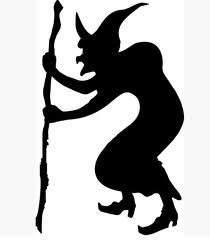
As an avid knitter, I’m very familiar with the concept of instructions. When I create a sweater, a scarf or a blanket, I know that attention to detail is required if I want the object to come out to the intended specifications. I need to read the pattern all the way through and I need to follow what has been written step-by-step. If I do this, I will be rewarded with a piece of handmade art.
In this week’s Torah portion, Terumah, we are given explicit instructions on how to build an Ark, a table, a lamp, a tabernacle, beams, a partition, an alter, and an enclosure. Each set of blue prints, if followed, will give us an object of great craftsmanship. God specifically says in Line 25:40 - Carefully observe the pattern. Furthermore, if we assemble the objects together, we get an even greater creation. God didn’t say to just make a tabernacle, he said “You must make the tabernacle and all its furnishings following the plan that I am showing you.”
In his 1889 essay The Decay of Lying, Oscar Wilde said that "Life imitates Art far more than Art imitates Life.” In the piece, Wilde expounded that “the self-conscious aim of Life is to find expression, and that Art offers it certain beautiful forms through which it may realize that energy." He went on to say that what is found in life and nature is not what is really there, but is that which artists have taught people to find there, through art. In fact, the notion that life imitates art actually derives from classical notions that can be traced as far back as the writings of Aristophanes of Byzantium. And, it is through the artistic objects that God so painstakingly describes in Terumah, that the Israelites are to realize the creative force that fills our universe.
The mission of the Pomegranate Guild of Judaic Needlework is to pass needlework traditions to other generations of women and men through the sharing of knowledge and techniques needed to create handcrafted items intended for both Jewish ritual and cultural use. The symbol of this group is the Pomegranate fruit which is made up of hundreds of tiny seeds which Jewish tradition says number 613. The art of this beautiful fruit is that each seed is needed to form the pomegranate and by eating the whole fruit, we display our desire to fulfill God’s 613 mitzvot. In essence, we imitate the art of this marvelous edible creation.
In 2007, while I was going through a devastating divorce, I found a knitting pattern for a chuppah. It was a complicated task involving holding two strands of yarn together and following an intricate lace pattern. It was done in four pieces which were then assembled together and, finally, surrounded by a crocheted border. I felt compelled to knit this incredible tapestry, yet I had no idea why. I stitched away for months, keeping great focus on the instructions until my masterpiece was complete. And, then, as if on queue, I met my future husband on J-date. We married under my chuppah in the sanctuary of my synagogue. Life truly did imitate art.
As Ruth Brin says in her poem “How to Build a Tabernacle,” may we pray to begin each task, each hour, according to the will of God, so that, like our ancestors, we may build and become what is good.
Shabbat Shalom.
In this week’s Torah portion, Terumah, we are given explicit instructions on how to build an Ark, a table, a lamp, a tabernacle, beams, a partition, an alter, and an enclosure. Each set of blue prints, if followed, will give us an object of great craftsmanship. God specifically says in Line 25:40 - Carefully observe the pattern. Furthermore, if we assemble the objects together, we get an even greater creation. God didn’t say to just make a tabernacle, he said “You must make the tabernacle and all its furnishings following the plan that I am showing you.”
In his 1889 essay The Decay of Lying, Oscar Wilde said that "Life imitates Art far more than Art imitates Life.” In the piece, Wilde expounded that “the self-conscious aim of Life is to find expression, and that Art offers it certain beautiful forms through which it may realize that energy." He went on to say that what is found in life and nature is not what is really there, but is that which artists have taught people to find there, through art. In fact, the notion that life imitates art actually derives from classical notions that can be traced as far back as the writings of Aristophanes of Byzantium. And, it is through the artistic objects that God so painstakingly describes in Terumah, that the Israelites are to realize the creative force that fills our universe.
The mission of the Pomegranate Guild of Judaic Needlework is to pass needlework traditions to other generations of women and men through the sharing of knowledge and techniques needed to create handcrafted items intended for both Jewish ritual and cultural use. The symbol of this group is the Pomegranate fruit which is made up of hundreds of tiny seeds which Jewish tradition says number 613. The art of this beautiful fruit is that each seed is needed to form the pomegranate and by eating the whole fruit, we display our desire to fulfill God’s 613 mitzvot. In essence, we imitate the art of this marvelous edible creation.
In 2007, while I was going through a devastating divorce, I found a knitting pattern for a chuppah. It was a complicated task involving holding two strands of yarn together and following an intricate lace pattern. It was done in four pieces which were then assembled together and, finally, surrounded by a crocheted border. I felt compelled to knit this incredible tapestry, yet I had no idea why. I stitched away for months, keeping great focus on the instructions until my masterpiece was complete. And, then, as if on queue, I met my future husband on J-date. We married under my chuppah in the sanctuary of my synagogue. Life truly did imitate art.
As Ruth Brin says in her poem “How to Build a Tabernacle,” may we pray to begin each task, each hour, according to the will of God, so that, like our ancestors, we may build and become what is good.
Shabbat Shalom.



 RSS Feed
RSS Feed
